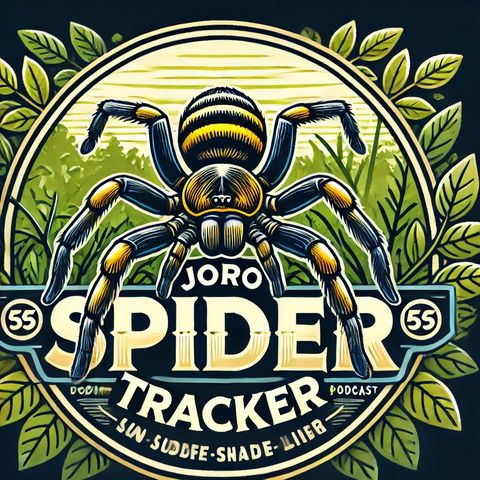Captivating Invasive: The Joro Spider's Spread Across the Southeastern U.S.
Aug 19, 2024 ·
2m 40s

Download and listen anywhere
Download your favorite episodes and enjoy them, wherever you are! Sign up or log in now to access offline listening.
Description
The Joro spider, scientifically known as Trichonephila clavata, is a member of the golden orb-weaver family known for spinning large, intricate webs. Originally native to East Asia, particularly Japan, China,...
show more
The Joro spider, scientifically known as Trichonephila clavata, is a member of the golden orb-weaver family known for spinning large, intricate webs. Originally native to East Asia, particularly Japan, China, and Korea, this species has recently garnered attention due to its expansion in the United States, specifically across the southeastern states.
One intriguing aspect of the Joro spider is its vibrant coloration and size. It exhibits a striking palette of yellow, blue, and red on its body, making it quite noticeable. Females, significantly larger than males, can measure up to three inches across when including their leg span.
The expansive webs of the Joro spider, often spanning several feet in diameter, are not just marvels of natural engineering but are also incredibly strong. These webs are constructed from silk, which research suggests may have greater resilience and flexibility compared to the silk of many other spiders. This attribute might explain the Joro spider's adaptability and survivability in diverse environmental conditions.
Despite their intimidating appearance, Joro spiders are not a major threat to humans. They are venomous, like most spiders, but their venom is not harmful to humans, having effects similar to a typical bee sting in terms of pain and irritation. Their primary diet consists of various insects, which may include pests, thereby naturally controlling these populations.
The spread of the Joro spider has been met with both curiosity and concern. Some of this spread has been attributed to human activities, particularly through the global shipping industry, which inadvertently transports spiders as stowaways. Their adaptability to different climates has allowed them to thrive far from their native habitat.
Ecologically, the Joro spider's presence in new territories such as the United States raises questions. While they can help control pest insect populations, the impact on local ecosystems and native species is still under study. Researchers are particularly interested in how these spiders might compete with native spiders and other predators, and what long-term ecological impacts might manifest.
Understanding and studying such species is crucial, not only for assessing their ecological role but also for managing any potential negative impacts on native ecosystems. As the Joro spider continues to weave its web across new lands, the scientific community remains vigilant, recognizing the importance of maintaining ecological balance while accommodating our planet's ever-changing biodiversity.
show less
One intriguing aspect of the Joro spider is its vibrant coloration and size. It exhibits a striking palette of yellow, blue, and red on its body, making it quite noticeable. Females, significantly larger than males, can measure up to three inches across when including their leg span.
The expansive webs of the Joro spider, often spanning several feet in diameter, are not just marvels of natural engineering but are also incredibly strong. These webs are constructed from silk, which research suggests may have greater resilience and flexibility compared to the silk of many other spiders. This attribute might explain the Joro spider's adaptability and survivability in diverse environmental conditions.
Despite their intimidating appearance, Joro spiders are not a major threat to humans. They are venomous, like most spiders, but their venom is not harmful to humans, having effects similar to a typical bee sting in terms of pain and irritation. Their primary diet consists of various insects, which may include pests, thereby naturally controlling these populations.
The spread of the Joro spider has been met with both curiosity and concern. Some of this spread has been attributed to human activities, particularly through the global shipping industry, which inadvertently transports spiders as stowaways. Their adaptability to different climates has allowed them to thrive far from their native habitat.
Ecologically, the Joro spider's presence in new territories such as the United States raises questions. While they can help control pest insect populations, the impact on local ecosystems and native species is still under study. Researchers are particularly interested in how these spiders might compete with native spiders and other predators, and what long-term ecological impacts might manifest.
Understanding and studying such species is crucial, not only for assessing their ecological role but also for managing any potential negative impacts on native ecosystems. As the Joro spider continues to weave its web across new lands, the scientific community remains vigilant, recognizing the importance of maintaining ecological balance while accommodating our planet's ever-changing biodiversity.
Information
| Author | QP-4 |
| Organization | William Corbin |
| Website | - |
| Tags |
Copyright 2024 - Spreaker Inc. an iHeartMedia Company
